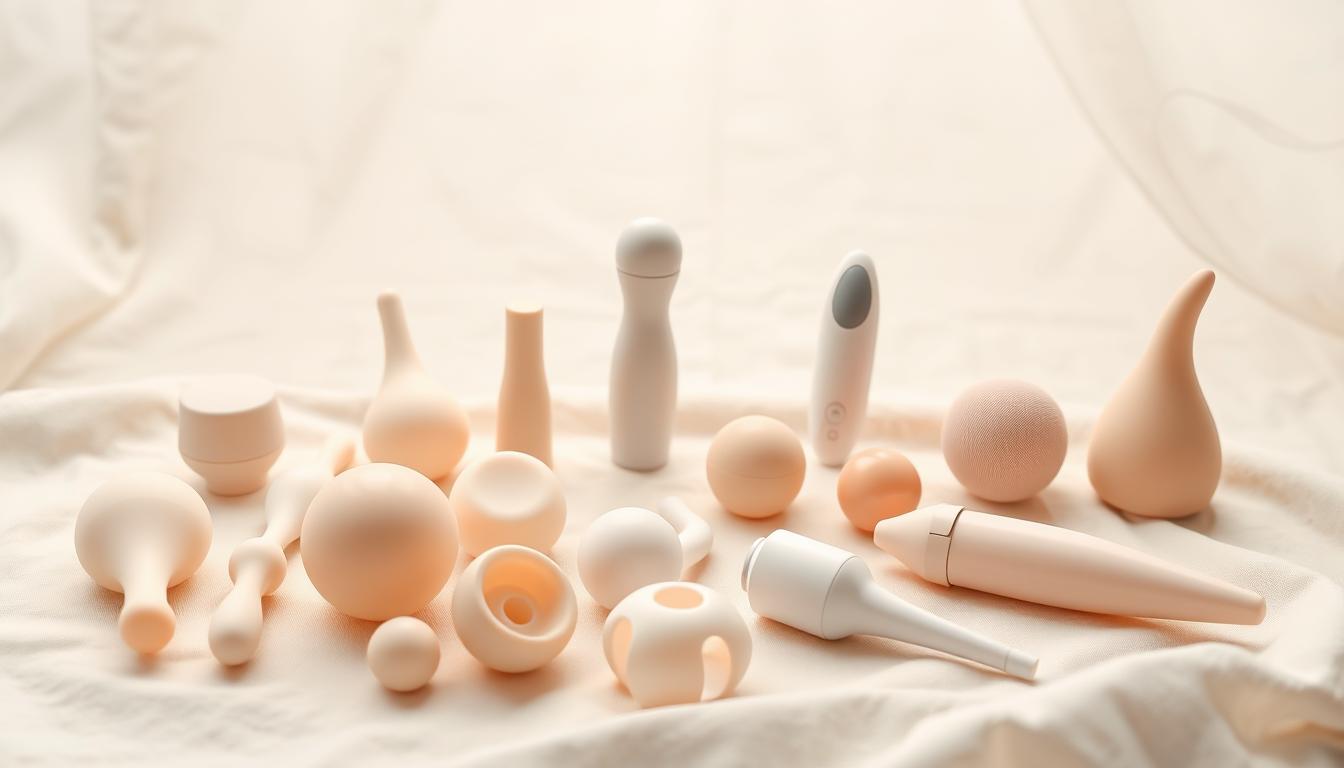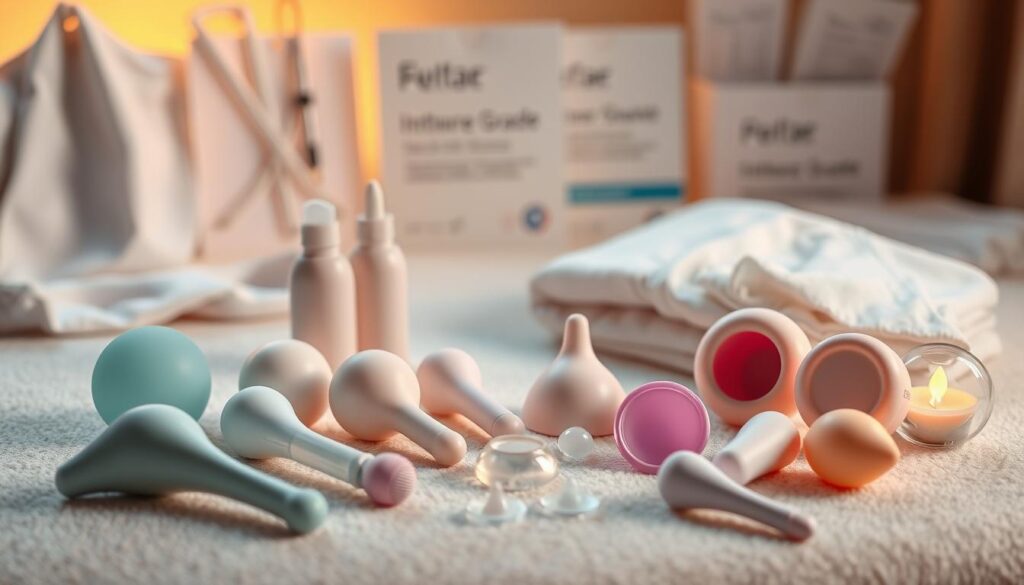
Welcoming a new baby brings joy, but it also reshapes every aspect of life – including physical recovery and closeness with your partner. Many new parents feel unprepared for how giving birth affects their bodies, energy levels, and relationships. This guide offers compassionate strategies to navigate this transition while prioritizing your health and connection.
Physical healing takes time – especially for the pelvic floor and areas affected by delivery. Doctors typically recommend waiting six weeks before resuming sexual activity, but every person’s timeline differs. Emotional shifts, like changes in body image or sexual desire, are equally important to acknowledge.
We’ll explore how open communication with your partner and healthcare provider can help rebuild trust and comfort. From choosing gentle products to adapting routines around your newborn’s schedule, small steps make a big difference. Whether you’re navigating fatigue, birth control choices, or simply need time to feel like yourself again, this journey is about progress, not perfection.
Key Takeaways
- Physical recovery after delivery requires patience and medical guidance
- Emotional adjustments are normal and deserve equal attention
- Open dialogue with partners strengthens relationships during transitions
- Specialized tools can enhance comfort during intimate moments
- Every couple’s timeline for resuming activity will vary
- Professional support is available for persistent challenges
Understanding Postpartum Sexual Wellness
The journey after welcoming a new baby involves both physical healing and emotional adaptation. While every parent’s experience differs, acknowledging these changes helps create realistic expectations and fosters connection during this transformative phase.

Physical Recovery and Healing After Childbirth
Healing from delivery often requires weeks of rest. The pelvic floor muscles, strained during pregnancy and birth, need time to regain strength. Medical professionals typically suggest waiting six weeks before resuming intercourse, but this timeline varies based on individual healing progress.
Factors like disrupted sleep patterns and exhaustion from caring for a newborn can delay readiness. A recent study highlights how proper guidance from healthcare providers ensures safer transitions back to intimacy. Openly discussing concerns with your partner helps align expectations and reduces pressure.
Emotional Shifts and Body Image Adjustments
Hormonal fluctuations and physical changes often impact self-confidence. Many new parents report feeling disconnected from their pre-baby identity, which can affect closeness. It’s normal to experience mixed emotions – joy coexists with fatigue or self-doubt.
Prioritizing honest conversations about needs and boundaries strengthens relationships. Small gestures, like scheduling quiet moments together or trying gentle touch exercises, rebuild trust gradually. Remember: healing isn’t linear, and seeking support is a sign of strength.
Incorporating Toys and Tools for Intimacy Rebuilding
Rebuilding connection after delivery benefits from creativity and thoughtful approaches. Gentle tools can help ease physical adjustments while fostering emotional bonds. Let’s explore how to blend comfort with curiosity during this phase.

Choosing the Right Toys for Comfort and Pleasure
Soft silicone vibrators or textured massage oils often work best for sensitive areas. Look for products designed with recovery in mind – curved shapes that avoid pressure points or temperature-sensitive materials. Many couples find postpartum anal toys helpful for exploring new sensations safely.
Integrating Playful Elements into Your Routine
Start with brief sessions during baby’s naps to reduce pressure. Try blindfolded touch exercises or storytelling games that focus on connection over performance. One parent shared: “We used a feather tickler during foot rubs – it felt silly but broke the ice.”
Enhancing Connection Through Sensual Exploration
Focus on non-goal-oriented activities like mutual scalp massages or shared baths. These moments rebuild trust while accommodating fatigue. Remember – laughter and patience matter more than perfection when rediscovering one another.
Discuss preferences openly with your partner, and keep healthcare providers informed about any discomfort. Small steps create lasting pathways to joy during this transformative chapter.
Navigating Communication and Relationship Adjustments
New parents often discover that their conversations need rewiring as much as their daily routines. Shifting priorities and physical changes after childbirth create new layers to navigate together. Let’s explore how intentional dialogue strengthens bonds during this tender phase.
Building Bridges Through Honest Conversations
Start by naming the elephant in the room: “This isn’t how things used to be.” Acknowledge that sex might feel different physically and emotionally. One parent shared:
“Talking about our fears made us feel like teammates again.”
Try these three communication boosters:
| Strategy | Benefit | When to Use |
|---|---|---|
| Weekly check-ins | Prevents resentment buildup | During baby’s morning nap |
| “I feel” statements | Reduces defensiveness | When discussing sensitive topics |
| Intimacy goal-setting | Creates shared expectations | Before bedtime routines |
Remember – health professionals emphasize that recovery timelines vary. If your partner suggests waiting beyond the typical six weeks, honor that choice. Physical discomfort often signals the need for more healing time.
Small gestures matter most. Leave encouraging notes by the diaper station. Whisper “We’ve got this” during 3 AM feedings. These moments build the foundation for deeper intimacy when you’re both ready.
Practical Tips for Safely Resuming Sexual Activity
Reconnecting physically after giving birth often feels like learning a new dance. Bodies change, schedules shift, and priorities evolve. Let’s explore ways to move forward with care and confidence.
Managing Discomfort and Adapting Techniques
Start slow. Water-based lubricants reduce friction during initial encounters. Try side-lying positions that minimize pressure on sensitive areas. One mom shared: “Using pillows for support made our first attempt feel safer.”
Pelvic floor exercises strengthen muscles strained during delivery. Many women find guided therapy sessions helpful for rebuilding strength. If discomfort persists, pause and consult your provider.
Exploring Birth Control Options and Timing
Discuss control options with your healthcare team before resuming activity. Some methods require waiting several weeks after delivery. Breastfeeding parents need options compatible with milk production.
Remember – ovulation can return quickly. A provider can explain risks of get pregnant too soon after delivery. Open talks with your partner ensure aligned goals for family planning.
Patience remains key. Celebrate small victories, whether it’s a 10-minute cuddle or laughing through awkward moments. Your relationship grows stronger when you honor each other’s pace.
Conclusion
Rebuilding physical connection after delivery takes patience and teamwork. Our guide shows how small steps – from honest talks to gentle experimentation – help couples rediscover joy. Remember, there’s no race to resume sex life milestones.
Time remains your greatest ally. While many women hear about the six weeks guideline, healing often continues for months. Working with your provider ensures safe progress, especially when choosing birth control options that fit your family plans.
Challenges like exhaustion or postpartum depression might slow your journey. That’s normal. What matters most? Keeping communication flowing with your partner and celebrating tiny victories – a shared laugh during midnight feedings counts!
Your relationship grows stronger when you honor each other’s pace. Whether it’s your first time trying intimacy tools or simply holding hands, these moments build trust. With care and creativity, you’ll craft a life that feels fulfilling – for both of you.
FAQ
How soon after delivery can we safely resume intimacy?
We recommend waiting until your healthcare provider clears you, usually around six weeks. Healing varies, so prioritize open communication with your partner and check in with your body’s comfort levels first.
What if intimacy feels uncomfortable initially?
Discomfort is common. Start slowly, use water-based lubricants, and explore gentle techniques or toys designed for sensitivity. If pain persists, consult a pelvic floor therapist or your doctor.
Are there toys that support postpartum comfort?
Yes! Silicone vibrators with adjustable settings or ergonomic designs can ease tension. Look for body-safe materials and avoid intense pressure until you feel ready.
How do we handle emotional changes affecting our connection?
Hormonal shifts and fatigue are normal. Schedule low-pressure moments for bonding, like shared baths or massages. Talk openly about feelings—it’s okay to take time rebuilding trust and closeness.
What birth control options work best while breastfeeding?
Non-hormonal IUDs, barrier methods, or progestin-only pills are often safe. Discuss timing and preferences with your provider to avoid surprises and align with your health goals.
When should we pause and seek medical advice?
If you experience heavy bleeding, severe pain, or emotional distress like postpartum depression, reach out to your care team. Your well-being matters—don’t hesitate to ask for support.
Can playful tools really improve our relationship dynamic?
Absolutely. Introducing lighthearted elements like massage oils or couple’s games reduces pressure. Focus on laughter and curiosity—it’s about rediscovery, not performance.
How do we balance exhaustion with quality time?
Sync routines with your baby’s sleep schedule. Even 10-minute cuddle sessions or heartfelt conversations can strengthen your bond. Small gestures add up!

